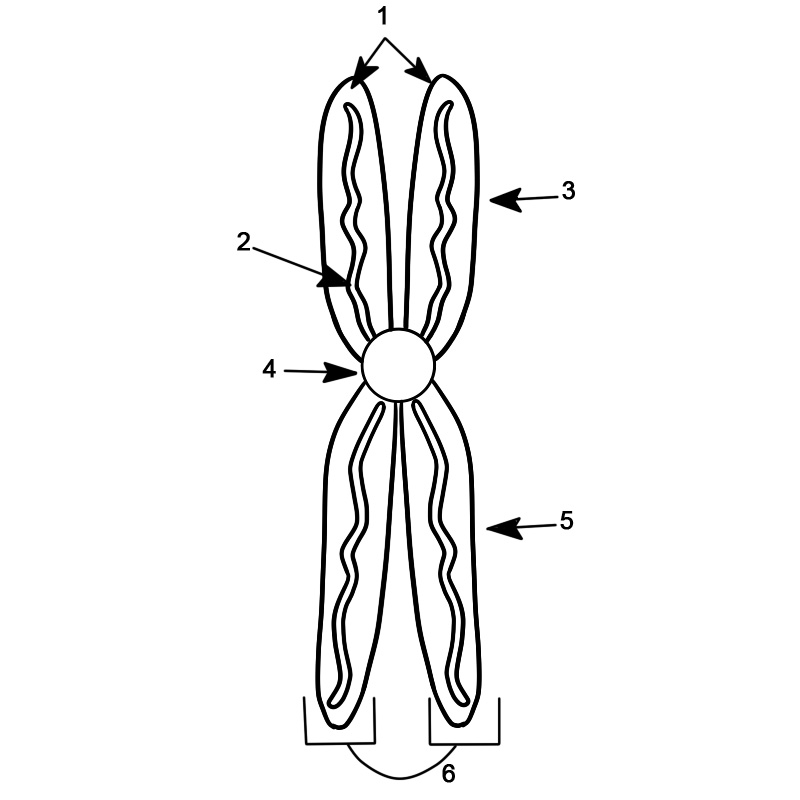A chromosome refers to a deoxyribonucleic acid molecule (DNA) with part or all of the genetic material (genome) of an organism. Most eukaryotic chromosomes are made up of packaging proteins which, aided by chaperone proteins, bind to and condense the DNA molecule to prevent it from becoming an unmanageable tangle.
Chromosomes are usually visible under a light microscope only when the cell is undergoing the metaphase of cell division. This is the period when all the chromosomes are aligned at the center of the cell in their condensed form. Before this happens, every chromosome is copied once (S phase), and the copy is joined to the original by a centromere. This results in either an X shaped structure in cases where the centromere is located in the middle of the chromosome or a two-arm structure in cases where the centromere is located near one of the ends. The original chromosome and the copy are then referred to as sister chromatids.
During metaphase, the X shape structure is known as the metaphase chromosome. In this highly condensed form, chromosomes are easiest to distinguish and study. In animal cells, chromosomes reach their highest compaction level in anaphase during chromosome segregation.
Chromosomal recombination during meiosis as well as subsequent sexual reproduction plays a crucial role in genetic diversity. In case these structures are manipulated incorrectly, through processes called chromosomal instability and translocation, the cell may undergo mitotic catastrophe. Normally, this will opt the cell to initiate apoptosis which leads to its own death. Mutations may sometimes hamper this process and therefore cause the progression of cancer.

Prokaryotes such as bacteria and archaea normally have a single circular chromosome but with many variations. The chromosomes of most bacteria (known as genophores by some scientists) can range in size from 130,000 base pairs only.
Prokaryotic chromosomes have less sequence-based structure than eukaryotes. Bacteria normally have a one-point (the origin of replication) from which replication begins. Some archaea have multiple replication origins.
Chromosomes in eukaryotes are made up of chromatin fiber. Chromatin fiber is made up of nucleosomes. Chromatin fibers are packaged by proteins into a condensed structure known as chromatin. Chromatin contains the bigger amount of DNA and a smaller amount inherited maternally can be found in the mitochondria. Chromatin is present in many cells, with a few exceptions like red blood cells.
Chromatin allows the long DNA molecules to fit into the cell nucleus. During cell division, chromatin condenses further to form microscopically visible chromosomes. The structure of the chromosome differs from the cell cycle.